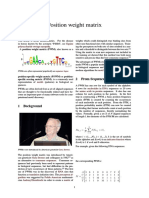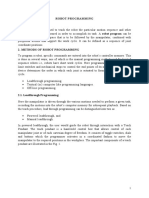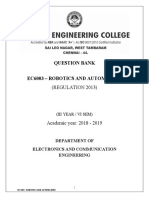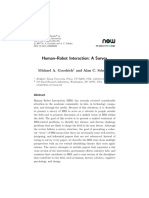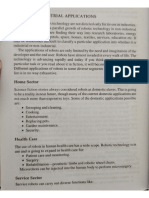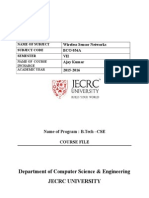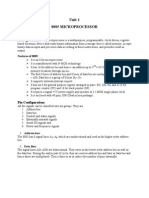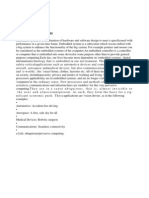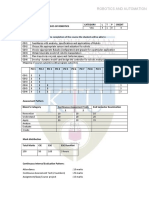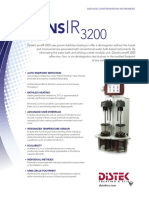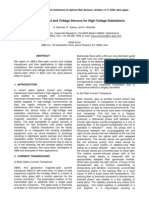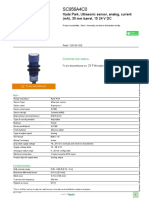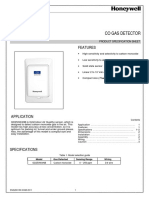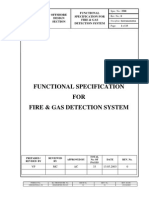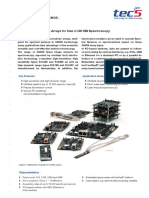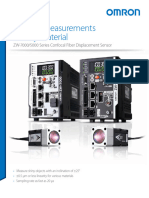SENSORS FOR ROBOTIC SYSTEMS
1.0 Transducers & Sensors
A transducer is a device that converts one type of physical variable (e.g,
force, pressure, temperature, velocity, flow rate, etc) into another form.
A common conversion is to electrical voltage, and the reason for making the
conversion is that the converted signal is more convenient to use and
evaluate.
A Sensor is a transducer that is used to make a measurement of a physical
variable of interest. Any sensor or transducer requires calibration in order to
be useful as a measuring device.
Transducers and sensors can be classified into two basic types:
- Analog transducers
- Digital transducers
- Analog transducers provide a continuous analog signal such as electrical
voltage or current. This signal can then be interpreted as the value of the
physical variable that is being measured.
- Digital transducers produce a digital output signal either in the from of a
set of parallel status bits or a series of pulses that can be counted. In either
form, the digital signal represents the value of the measured variable.
1.1 Main types of sensors
The function of robot sensors may be divided into two principal categories:
- Internal & External State Sensors.
1
�- Internal State Sensors deal with the detection of variable such as the
position and the rate of movement (velocity) of robot arm joints, which are
used for control control.
- External State sensors on the other hand deal with the detection of
variables such as proximity, range and touch.
External sensors are used for robot guidance as well as for object
identification and handling (Vision and tactile sensors).
External sensors can be further classified as Contact & Non Contact types.
Contacting sensors respond to a physical contact such as touch, slip,
force and torque.
Non Contacting sensors rely on the response of a detector to variations
in optical, accoustic or electromagnetic radiation.
1.2 Sensor Characteristics
These can be divided into Static and Dynamic characteristics.
- Static: Linearity
Hysteresis
Resolution
- Dynamic: Frequency Response
Step Response
1.3 Internal Sensors : - Position - Velocity
1.3.1 Position Sensors : - Angular: - Tachometers
- Incremental Encoders
- Absolute (Shaft) Encoders
- Linear: - Analog Resistive
- Digital (encoded) types.
2
�Absolute encoders are used in situations when :
- the control system is subjected to frequent power shut down and the
current positional information is to be retained.
- frequent resetting of the robot arm positions is to be avoided such as
high flexibility and reliability position sensing systems.
Absolute encoders generally are limited to one single revolution.
Analog Resistive sensors: linear insulator bar having a resistance wire
wound on it.
1.3.2 Velocity Sensors: - D.C Tachogenerators
- Optical Incremental Encoders
1.4 External Sensors
External Sensors
Contact Non-Contact
Tactile Force/Torque Visual Proximity/Range
1.4.1 Proximity Sensors
Proximity Sensors
Pneumatic Inductive Capacitive Optical Ultrasonic
3
�(i) Pneumatic - known as Nozzle Flapper: Air is supplied and by moving a
flapper in front of the nozzle the output pressure is varied.
(ii) Inductive - based on the principle of change of inductance due to the
presence of a ferromagnetic object.
(iii) Hall effect - based on the principle of Lorenz force.
(iv) Capacitive - can detect all objects made of electrically conductive
materials.
(v) Optical - narrow beam is produced by an L.E.D, and a lens. Reflected
light on a photodiode depends on the distance of the object reflecting
the light.
(vi) Ultrasonic - sensor consists of a piezo crystal and microphones.
1.4.2 Tactile Sensors:
These are a generalised analog Touch Sensors since they measure forces at
several points (in an array) at the contacting area between the robot’s gripper
and the workpiece.
Tactile Sensors
Resistive Optical Magnetic Capacitive
General requirements for tactile sensors are as follows:
- Should provide an array of sensing elements at a density of 10*10 per
square inch constructed on a compliant surface.
- Each element should have a response time of 1 to 10 msec (step).
- The elements must be stable, repeatable and have low hysteresis.
- the threshold sensitivity for the elements should be about 1 grammes, with
an upper limit of 1000 grammes.
- the sensing material must be robust, capable of standing upto harsh
industrial environments.

